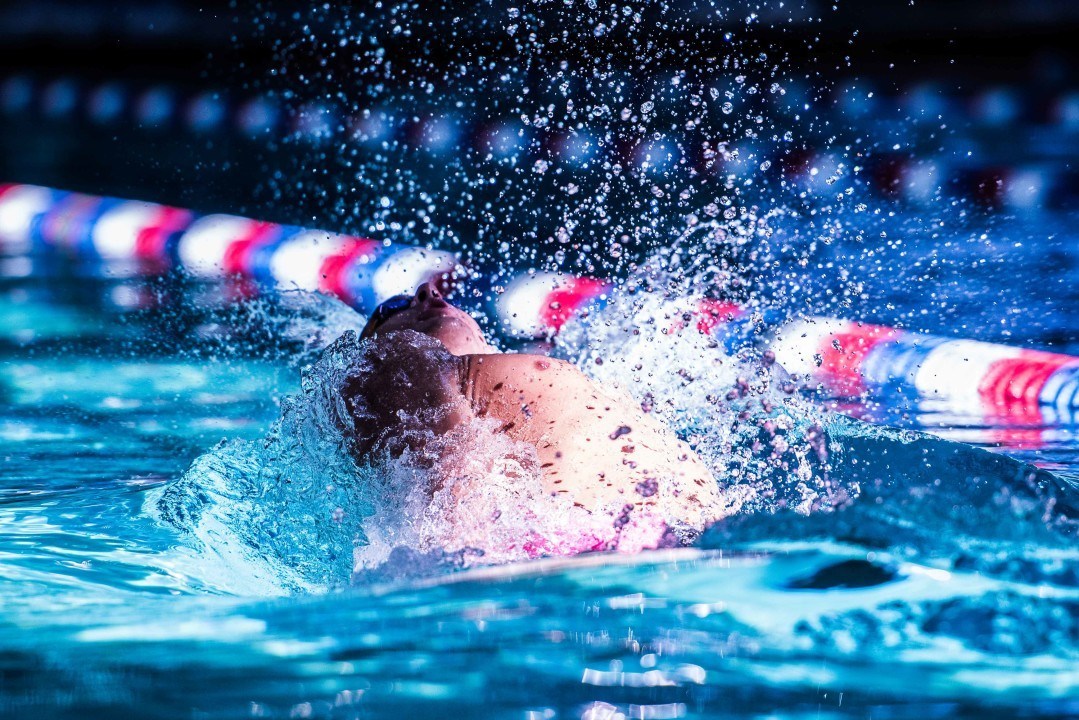Courtesy of Gary Hall Sr., 10-time World Record Holder, 3-time Olympian, 1976 Olympic Games US Flagbearer and The Race Club co-founder.
While nearly all of the forces that create propulsion come from the hands and feet, there are certain other movements that we can do with our bodies that will increase the amount of propulsion coming from the pull and kick. We call those coupling motions.
I have written extensively in the past about the importance of coupling motions, but for those that missed reading them, let me explain. A coupling motion is a motion of some part of our body that by itself produces no propulsion, yet, when coupled with the propulsive forces, will make them stronger. Since we live in what is called an open system in nature, where the energy from one part of our moving body affects other parts of our body, using coupling motions are a powerful way to swim faster.
The coupling motions of swimming are very important; like putting a fuel additive into your gas tank. Any serious discussion of propulsion in swimming would be remiss without mentioning the coupling motions.
The following are important coupling motions in all four strokes and in the start and the propulsive forces they are coupling with.
- Freestyle: Rotation of the body (including the head after the breath) and the recovery of the arms (pull and kick)
- Backstroke: Rotation of the body and recovery of the arms (pull and kick)
- Breaststroke: Elevation of the upper body (pull) and pressing down of the upper body and head (sometimes the arms, depending on the technique) (kick)
- Butterfly: Recovery of the arms, snapping down of the head on the front breath (second down kick)
Start: Elevation of the head, motion of the arms, elevation of the back leg (feet or feet and arms, depending on the technique)
The keys to making the coupling motions effective are precise timing and more energy. The coupling motion is most effective when the maximum kinetic energy of the motion is timed precisely with the maximum propulsion. For example, if the coupling motion ends before the propulsive force begins, it has no effect at all. A good example is in breaststroke, perhaps the most timing-sensitive stroke of all, where if the body pressing forward reaches the water much before the feet begin to push backward, the benefit of all that work is lost. For that reason, the kicking cycle of breaststroke needs to be lightning fast to work well with the coupling motions of the upper body.
The kinetic energy of coupling motions in swimming can increase in the following ways: rotating faster, lengthening (straightening) the arms, pressing the body forward harder or snapping down the head faster. There is a price to pay, however, and it is called work.
It is much easier to swim without using these high-energy coupling motions. I call that technique survival stroke, which utilizes less energy to get through a workout. If you get accustomed to swimming with survival stroke technique that is the way you will likely swim in the competition. You may invest less energy in the race, but you probably won’t swim as fast and likely won’t win.
At the Race Club we take coupling motions very seriously. Coupling motions are one of the main reasons that swimmers that do not appear to be very strong can swim faster and with more power than bigger, stronger swimmers. We have designed many drills that will help you with the energy and timing of your coupling motions. Come to Islamorada or Coronado and let us show you them!
Yours in swimming,
Gary Sr.

Gary Hall, Sr., Technical Director and Head Coach of The Race Club (courtesy of TRC)
Like The Race Club on Facebook
Follow The Race Club on Instagram
Follow The Race Club on Twitter
Connect to The Race Club / Gary Hall Sr. on Linkedin
THE RACE CLUB
Because Life is Worth Swimming, our mission is to promote swimming through sport, lifelong enjoyment, and good health benefits. Our objective is for each member of and each participant in The Race Club to improve his or her swimming performances, health, and self-esteem through our educational programs, services and creativity. We strive to help each member of The Race Club overcome challenges and reach his or her individual life goals.
 The Race Club provides facilities, coaching, training, technical instruction, video, fitness and health programs for swimmers of all ages and abilities. Race Club swim camps are designed and tailored to satisfy each swimmer’s needs, whether one is trying to reach the Olympic Games or simply improve one’s fitness. Our programs are suitable for beginner swimmers, pleasure swimmers, fitness swimmers, USA swimming or YMCA swimmers, or triathletes; anyone who wants to improve swimming skills. All of our Race Club members share an enjoyment of being in the water and use swimming to stimulate a more active mind and body.
The Race Club provides facilities, coaching, training, technical instruction, video, fitness and health programs for swimmers of all ages and abilities. Race Club swim camps are designed and tailored to satisfy each swimmer’s needs, whether one is trying to reach the Olympic Games or simply improve one’s fitness. Our programs are suitable for beginner swimmers, pleasure swimmers, fitness swimmers, USA swimming or YMCA swimmers, or triathletes; anyone who wants to improve swimming skills. All of our Race Club members share an enjoyment of being in the water and use swimming to stimulate a more active mind and body.
AB
